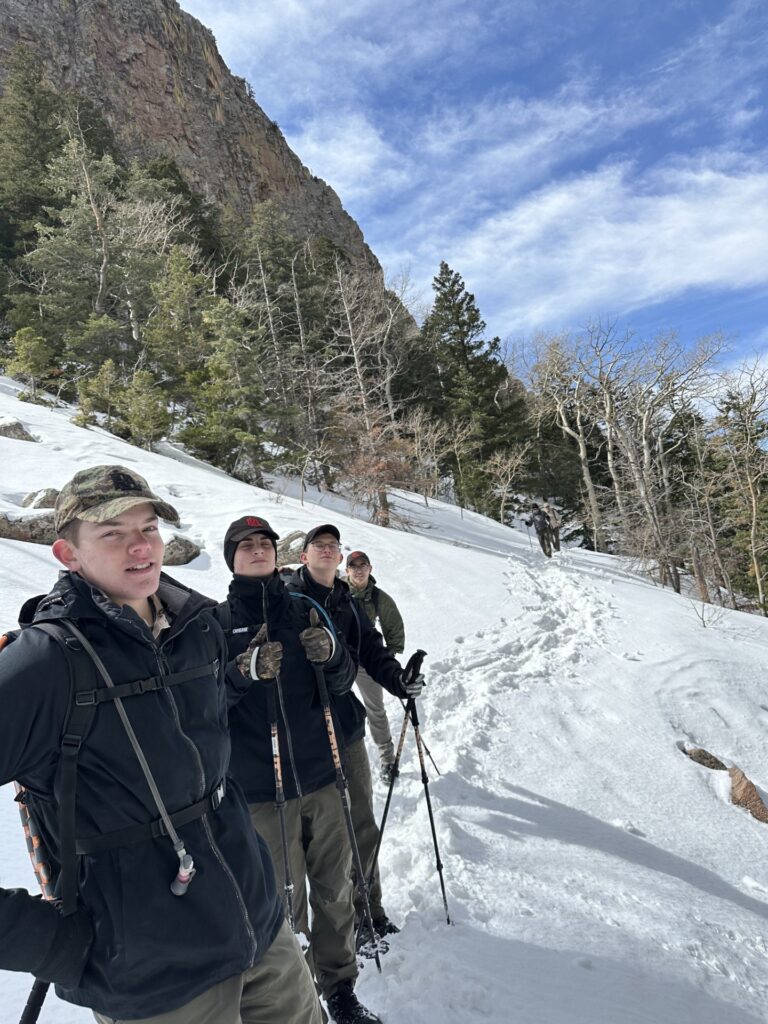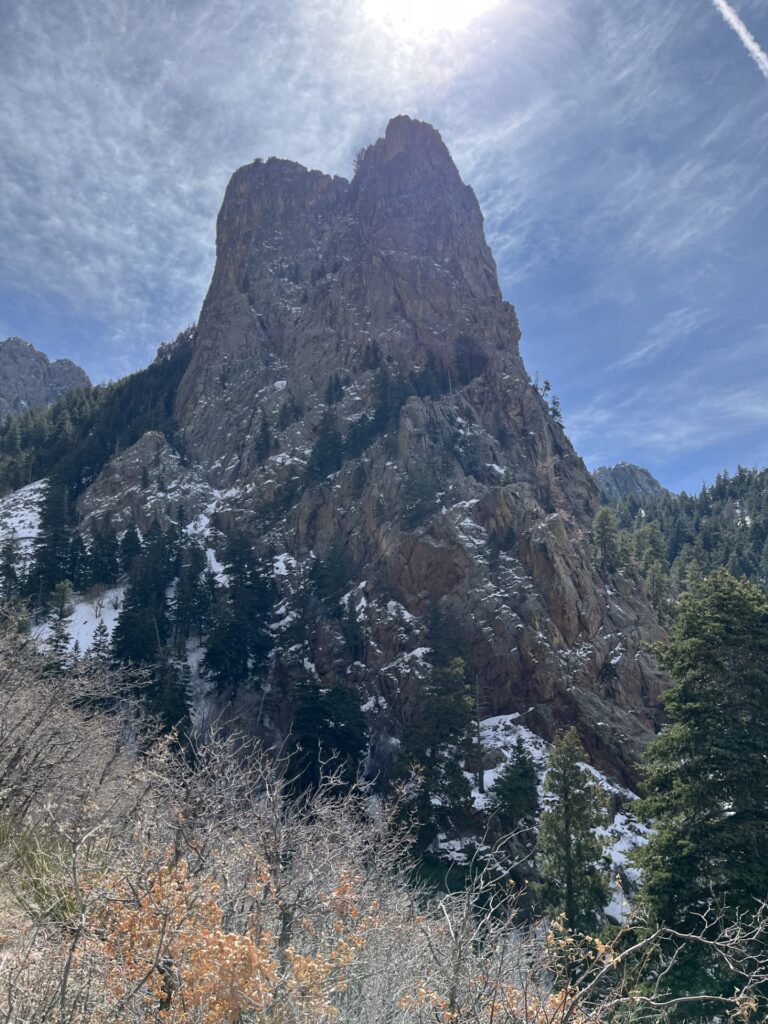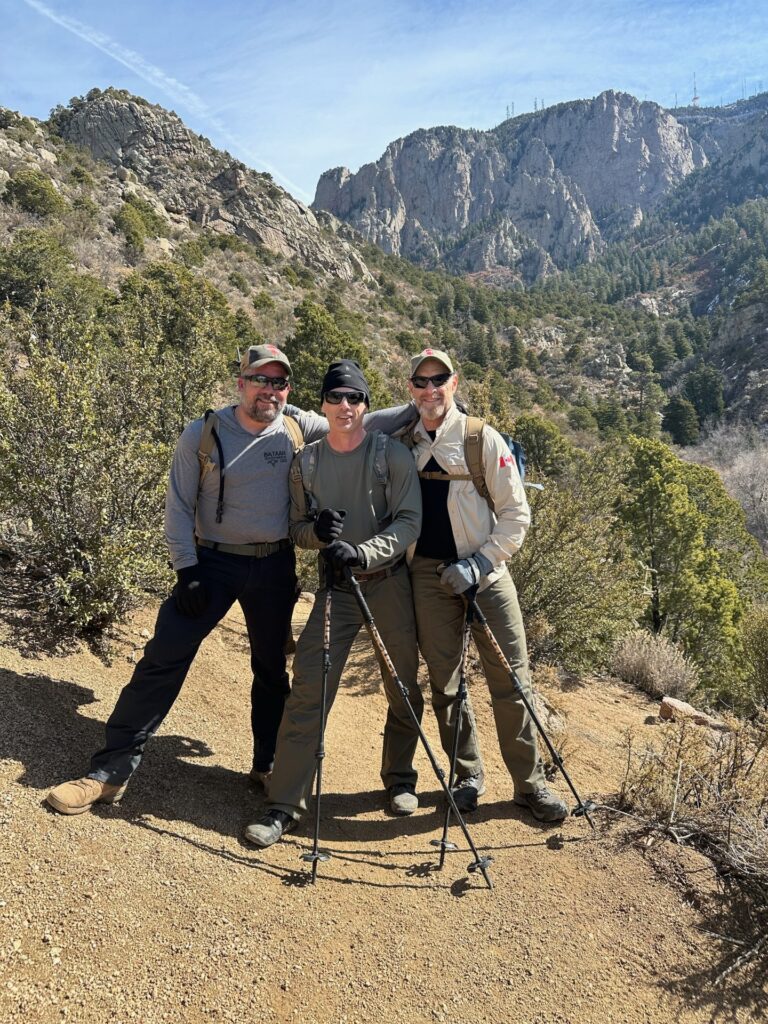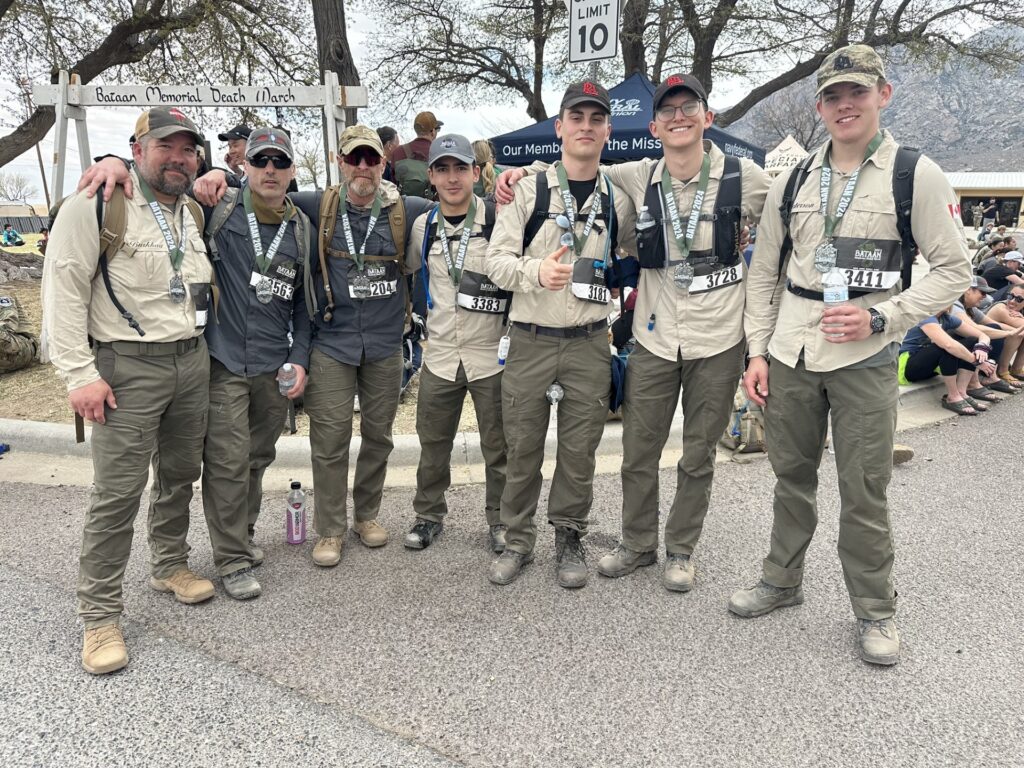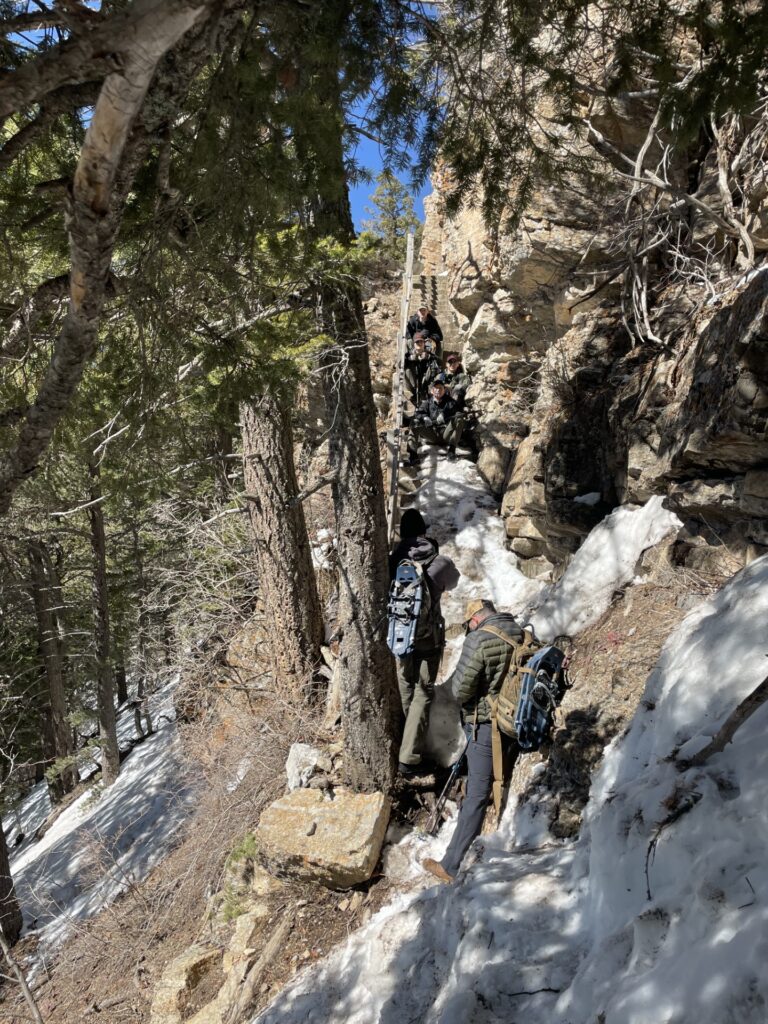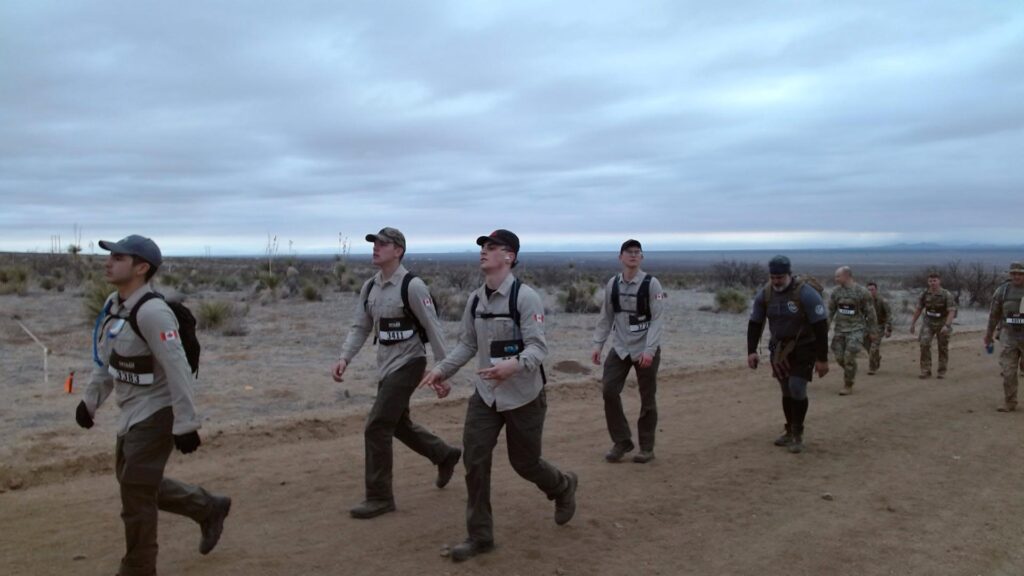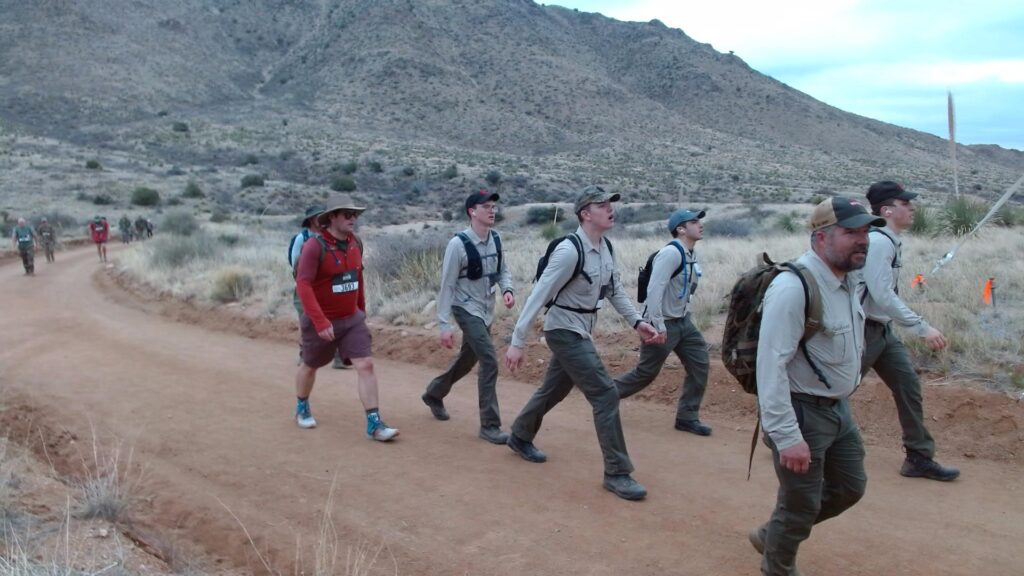The tale of BATAAN is steeped in historical facts about the atrocities of war and highlighted by human triumph in the face of tragic suffering and loss. The annual BATAAN Memorial Death March commemorates events that happened in the Pacific theater during the Second World War.
Following the attack on Pearl Harbor, Japanese soldiers overran much of Southeast Asia. In an attempt to secure the city of Manila American and Filipino troops moved into the Bataan Peninsula. American soldiers were from multiple branches of the US military including the New Mexico National Guard. The combined force was isolated from support and cut off from all sources of resupply. On April 9, 1942, after three brutal months of fighting in extreme climate conditions, the Japanese defeated the American and Filipino army, resulting in surrender and imprisonment of these troops. These troops did not surrender in battle. They were surrendered. Entirely against their will. Their cry is “ no Mama, no Papa, no Uncle Sam. We are the battling bastards of Bataan, and nobody gives a damn.” This captures the contempt with which their fight was halted against their will.
Upwards of 75 000 prisoners needed to be moved North to prison camps. Most were sick and wounded and in no shape to be moved as they were. The Japanese army led by Lieutenant General Masaharu Homma marched prisoners roughly 65 miles. During the march prisoners were denied food, water, and medical treatment. Thousands died. Many were brutalized and executed by captors. At the end of the march prisoners were loaded into railcars, standing shoulder to shoulder like match sticks and transported another 75 miles. Roughly 54 000 prisoners survived. The remainder died on the march, or where they stood on the railcar. Survivors marched another 8 miles to Camp O’Donnell where they remained until being liberated in early 1945.
General Homma was eventually captured and executed for war crimes against humanity.
There are many good interviews with survivors on Youtube. I would encourage all to go and watch these harrowing personal accounts.
Endurance athletes from around the globe descend on White Sands Missile Range to partake in the Memorial BATAAN Death March. A marathon distance event of 26.2 miles in the comfort of friendly surroundings and supportive volunteers. With every step all I can think about is how the distance and terrain must pale in comparison to the jungle heat the original prisoners suffered. Weakened by dehydration while being fed and watered by friendly volunteers my thoughts are overwhelmed by the reality of the brutalization endured by those on the death march who were already sick and dying. Unimaginable suffering. Thier’s was a race for survival against disease, starvation and an enemy who was marching them to their death. Our’s is a race to commemorate their suffering and loss.
Their march was broken into thirds. It began on the Southern tip of the Bataan Peninsula and followed the Eastern coastline along Manila Bay. The second third began at San Fernando as they were forced into overcrowded railcars. In the final third leg troops then marched another 8 miles to their final destination at Camp O’Donnell. Please take some time to look at the videos that are available. There are no words that can be written here that would do justice to their own accounts.
Our memorial race is also broken into thirds. It begins at 4303 feet of elevation at the heart of WSMR and continues along a sandy road towards the Northeast side of Antelope Hill. The footing is good here and you can move quickly. So we do, mostly at a jogging pace. There is much congestion and marcher traffic so it’s important for the team to weave through traffic and stay together in a single file. The second third takes marchers to a course high point at 5393 feet of elevation behind Mineral Hill Mountain. 2 miles of road at a steady incline up to 4600 feet are spent leaning over our boots and shuffling just a little faster than a brisk walk. Again, the footing makes it possible to move quickly, so we do. The elevation, and elevation gain make you suffer though. The elevation makes the air cool, but the sun is hot. Then there is the wind that picks up depending on where you are on the course. We are suffering, nothing like they did, so we press on in ease always mindful of what they endured. Back in the sand and around Mineral hill the footing is not great. Watch where you step as every footstep counts towards minimizing the damage to feet and the blisters you hope don’t form. 8 miles in the sand around the mountain. Back to asphalt and down to 4370 feet at mile 20 is where things get difficult. Mile 20. The start of the final third and the beginning of the worst footing and a good amount of up and down that hurt you in every way. Mile 24.5. The footing is good! We can see the beautiful Organ mountains seated majestically behind the base. So close, but so far. It’s gut check time. How much will you deny yourself the comfort you so desperately want and move just a little quicker. Mile 26. 200 yards to go. Surrounded by the team, supportive volunteers, and cheering onlookers. The finish line. 26.2 miles. I am happy and proud of our accomplishment, but my thoughts remain with the memory of those who served, suffered, and made the ultimate sacrifice.
BATAAN is on most marathoners’ bucket list. Athletes usually dedicate a year to it understanding its historical and cultural significance. Most fear the elevation, typical mountain weather conditions, and dread the terrain and poor footing. Adding 30 – 60 minutes to your best marathon time is a realistic expectation. The average finish time was 8:34. Our team consisting of Corporal Stephan Paterson, Cadet Nick Thompson, Lt Paula Sinclair, CSM Luis Silva and Captain Brian Lee finished in 7:05 wearing boots, uniform, and carrying a hydration pack. This is categorized as Military Light. To add context, the best military light team of professional soldiers finished in 7:35.
In addition to the BATAAN experience, we spent time in scenic Santa Fe and Albuquerque. Needing to quickly familiarize ourselves with how the body responds to physical strain at elevation far from what we are acclimated to, we climb Sandia Peak just Northeast of Albuquerque. There are several strenuous mountain scrambles to choose from. A mountain scramble is a steep hike on a trail taking you from the base of a mountain to its achievable high point. Doing the scramble in March means the hike is not in season, so we relied on snowshoes and hiking poles to navigate the snow and wintery terrain. This year we took the tram from the base of the mountain to its summit at 10 400 feet. There we hiked the summit ridge, then dropped down to the La Luz trail just below the summit ridge, hiking back to the tram to descend the mountain. In Santa Fe we visit the Bataan Museum, the State Capitol building and the town square in old Santa Fe where culture and history are absorbed. While at the Capitol building, referred to as the Round House, Senate was in session and the boys got to see Amercian politicians in action advocating for their constituents on political matters significant to the residents of New Mexico. Throughout our stay we are hosted by Sergent Major Gerald Burkhart and Master Sergent Abraham Fuentes of the New Mexico National Guard. Their hospitality and friendship are greatly appreciated. Without this support our BATAAN experience is not possible.
